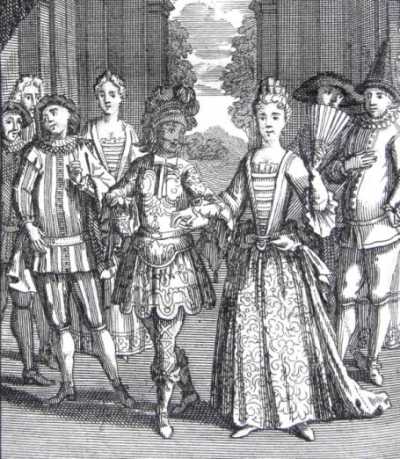Contredanses parisiennes unter der Régence (1715-1723) / Parisian Contredanses in the Regency Period (1715–1723)
Deutsche Version
«La folle Contre-danse & le Cotillon badin» (der ausgelassene Contredanse und der heitere Cotillon) erobern im Team den Gesellschaftstanz im frühen 18. Jahrhundert. Die neuen kreativen Tanzformen entfalten sich vehement unter dem liberalen Zeitgeist, der die Regentschaft von Philippe d'Orléans, Sohn Lieselottes von der Pfalz begleitet. In Paris herrscht Aufbruchstimmung. Die berühmt-berüchtigten bals publics im Palais-Royal, auch als bals de l'opéra bekannt, sind der neue gesellschaftliche Fokus von Aristokratie und Geldadel. Hier trifft sich Opernvolk mit «beau monde», der Duc d'Orléans, Lebemann und Kunstgenießer, mischt kräftig mit. Die alten «danses nobles», die nach verstaubter Versailler Etikette riechen, sind fehl am Platz und weichen den neuen quirligen Tänzen unkomplizierter Façon.
Der Kurs basiert auf wiedergefundenen Handschriften des frühen 18. Jahrhunderts, in denen bislang unbekannte Cotillons, Contredanses en carré (à 4 und à 8) und en colonne darauf warten, wachgetanzt zu werden. Fast alle standen auf dem Programm der Pariser Opernbälle.
Zielgruppe sind Tänzer/Innen, die mit dem Contredanse-Schrittrepertoire des 18. Jhs vertraut sind.
English version
‘La folle contredanse et le cotillon badin’ (the boisterous contredanse and the buoyant cotillon) found their way into social dances in the early eighteenth century. During the regency of the liberally minded Philippe d'Orléans with its initial atmosphere of change, Paris was full of excitement. The (in)famous public balls at the Palais Royal, former home of the opera, became the new venue of Parisian fashionable high society. The old ‘danses nobles’ that smack of the dusty etiquette of the court at Versailles gave way to the young branch of lively contredanses with their strong creative power.
The class is based upon hitherto unknown Cotillons, Contredanses en carré (à 4 and à 8) and en colonne found in recently rediscovered manuscripts of the early eighteenth century. Most of the dances belonged to the opera ball repertoire.
The course is aimed at participants who are acquainted with eigtheenth century contredanse steps (intermediate level).
| Attachment | Size |
|---|---|
| 227.36 KB |
